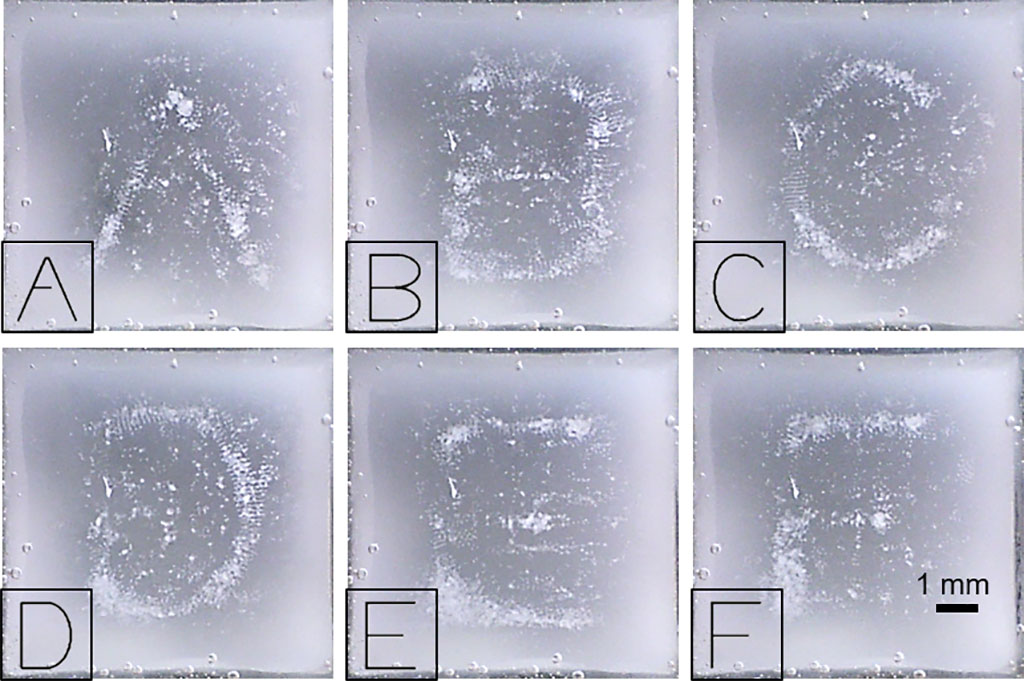Ultrasonic 3D Projector Expands Treatment Options
By MedImaging International staff writers
Posted on 05 Nov 2020
A new study shows how ultrasound technology can be used to generate dynamic sound profiles with high resolution and intensity, expanding therapeutic use.Posted on 05 Nov 2020
Developed at the University of Stuttgart (Germany) and the Max Planck Institute for Intelligent Systems (MPI-IS; Stuttgart, Germany), the spatial ultrasound modulator (SUM) is designed to flexibly temper 3D ultrasound fields, generating dynamic sound pressure profiles. SUM is based on a small complementary metal-oxide-semiconductor (CMOS) chip, on which hydrogen bubbles are formed by 10,000 electrodes in a thin water film via electrolysis. Each electrode has an edge length of less than a tenth of a millimeter, and can be controlled individually.

Image: Letters of the alphabet generated using modulated sound pressure profiles (Photo courtesy of MPI-IS)
If an ultrasonic wave is sent through the chip with a transducer, it passes through the chip unhindered. But as soon as it hits the water film with the hydrogen bubbles, it continues to travel only through the liquid, creating a sound pressure profile with cut-outs at the points where the air bubbles are located, similar to a collimator. To form a different sound profile, the hydrogen bubbles are first dissipated away from the chip, which can then be used to generate further gas bubbles in a new pattern.
To demonstrate how precisely and variably the SUM projector works, the researchers spelled out the alphabet in a series of sound pressure profiles. To make the letters visible, they caught micro-particles in the various sound pressure profiles. Depending on the sound pattern, the particles arranged themselves into the individual letters. A new sound profile can be generated in about 10 seconds. The study was published on September 10, 2020, in Nature Communications.
“Ultrasound is widely used as a diagnostic tool in both medicine and materials science. It can also be used therapeutically. The ultrasound destroys the cancer cells by specific heating of the diseased tissue. In order to avoid damaging healthy tissue, the sound pressure profile must be precisely shaped,” said Professor Peer Fischer, PhD, of MPI-IS and the University of Stuttgart. “Tailoring an intensive ultrasound field to diseased tissue is somewhat more difficult in the brain. This is because the skullcap distorts the sound wave.”
Related Links:
University of Stuttgart
Max Planck Institute for Intelligent Systems














